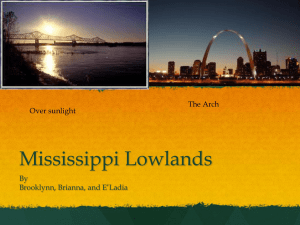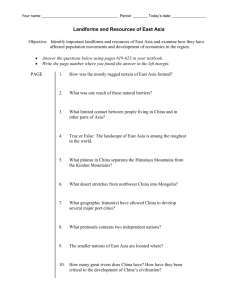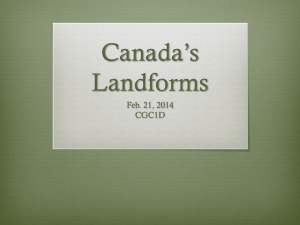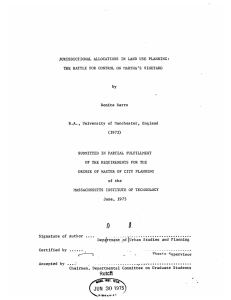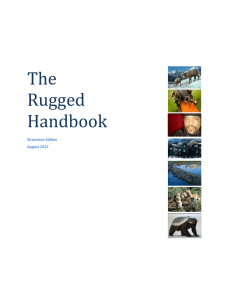Chapter 5 * North America
advertisement
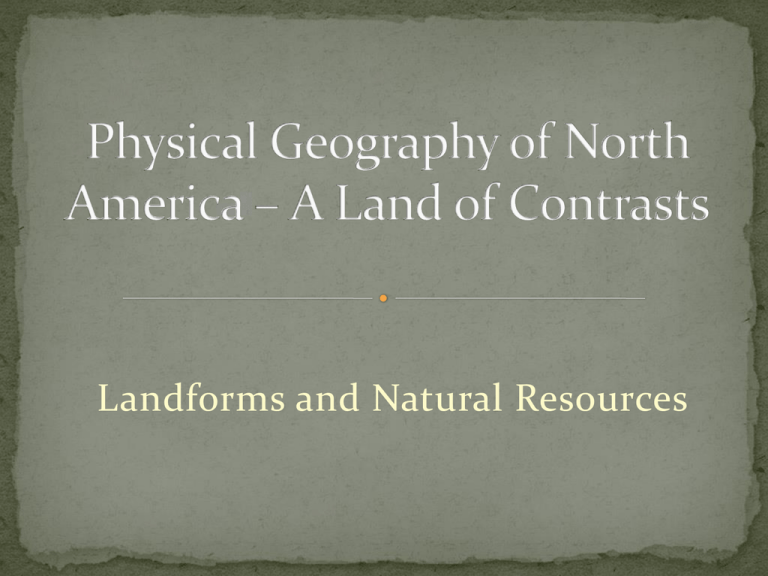
Landforms and Natural Resources U.S. and Canada are bound together by both physical geography and cultural heritage as well as strong economic and political ties Both rank among the largest in the world Both are rich in natural resources Fertile soils, ample supplies of H20, vast forests and large deposits of a variety of minerals Popular with immigrants from around the world Many and Varied Landforms Eastern Lowlands Appalachian Highlands Flat, coastal plain along the Runs north to south from narrower Atlantic coast from the Northeast to Florida Offers many excellent harbors Gulf Coastal Plain is much broader from Florida to Texas Low plateau – called the Piedmont (rolling hills) – connects the lowlands to the mountains Alabama into Canada Contain several other mountain ranges w/in (Catskill, Blue Ridge, Great Smoky Mountains) Interior Lowlands Mtn. Plateaus & Basins Mainly level lands flattened by Rocky Mtns – Massive & rugged huge glaciers 1000’s of years ago Includes lowland, rolling hills, thousands of lakes and rivers + some of the most fertile soil Divided into 3 sub-regions: Interior Plains – Appalanchains to 300 miles west of Mississippi Great Plains – largely treeless area up to 4,000 ft. Canadian Shield – rocky, mainly flat area covering 2 million sq. mi. Relatively young - 80 million years old – not eroded like Apps Continental Divide – highest point of the Rockies that splits rivers flowing east and west Sierra Nevadas & the Cascade Range run parallel to Pacific coastline Highest peak is Mt. McKinley 20,320’ Steep cliffs, deep canyons and lowland desert areas called basins The Islands Natural Resources Canada’s northernmost lands Oceans and Waterways are islands near the Arctic Circle 3 islands – Ellesmere, Victoria & Baffin – are only smaller than Greenland U.S. - Aleutian Islands - volcanic, rugged and treeless off of Alaska and Hawaii – lush, tropical – both reside outside of continental U.S. Atlantic, Pacific, Artic and Gulf of Mexico Great Lakes – Superior, Michigan, Huron, Erie and Ontario Lands and Forests Minerals and Fossil Fuels Gives U.S. & Canada means to industrialize U.S. = world’s biggest consumer of energy resources Canada’s exports to energy to U.S.

